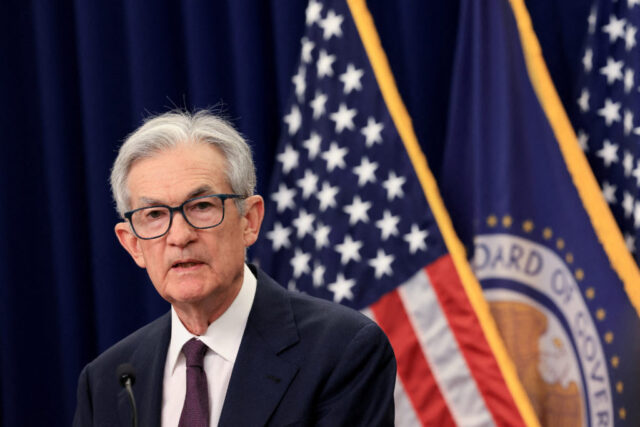WASHINGTON (AP) — The Federal Reserve will continue to wait and see how the economy evolves before deciding whether to reduce its key interest rate, Chair Jerome Powell said Tuesday, a stance directly at odds with President Donald Trump’s calls for immediate cuts.
“For the time being, we are well positioned to wait to learn more about the likely course of the economy before considering any adjustments to our policy stance,” Powell said in prepared remarks he will deliver Tuesday before the House Financial Services Committee.
WATCH: Powell holds news briefing as Fed keeps its key rate unchanged
Powell is facing two days of what could be tough grilling on Capitol Hill, as Trump has repeatedly urged the Fed to reduce borrowing costs. Powell has often received a positive reception before House and Senate committees that oversee the Fed, or at least muted criticism. Powell has also often cited his support in Congress as a bulwark against Trump’s attacks, but that support could wane under the president’s ongoing assaults.
Trump lashed out again early Tuesday, posting on his social media site: “I hope Congress really works this very dumb, hardheaded person, over. We will be paying for his incompetence for many years to come.”
In February, the last time Powell appeared before Congress, Rep. French Hill, the Arkansas Republican who chairs the financial services committee, urged Powell to ensure inflation returned to the Fed’s target of 2%, which typically requires keeping rates elevated.
Powell said in his written testimony that ” increases in tariffs this year are likely to push up prices and weigh on economic activity.”
He said the bump to inflation from tariffs could be temporary, or it could lead to a more persistent bout of inflation.
The Fed’s “obligation,” Powell said, “is … to prevent a one-time increase in the price level from becoming an ongoing inflation problem.”
The Fed’s 19-member interest rate setting committee, led by the chair, decides whether to cut or raise borrowing costs. They typically increase rates to cool the economy to fight or prevent inflation, and lower rates when the economy is weak to boost borrowing and spending.
The Fed’s committee voted unanimously last week to keep its key rate unchanged, though the Fed also released forecasts of future rate cuts that revealed emerging divisions among the policymakers. Seven projected no rate cuts at all this year, two just one, while 10 forecast at least two reductions.
At a news conference last week, Powell suggested the Fed would monitor how the economy evolves over the summer in response to Trump’s tariffs and other policies before deciding whether to cut rates. His comments suggested a rate reduction wouldn’t occur until September.
Yet two high-profile members of the Fed’s governing board, Michelle Bowman and Christopher Waller, have since suggested the central bank could cut its rate as early as its next meeting in July. Both officials were appointed by Trump during his first term and Waller is often mentioned as a potential replacement for Powell when his term ends next May. Powell was also appointed by Trump in late 2017.
Trump is urging the Fed to cut rates to save the U.S. government money on its interest payments affixed to the vast national debt. Yet the Fed has long resisted considering the government’s financing costs when making interest rate decisions, preferring instead to focus on the health of the economy and inflation.
Waller, in a television interview Friday, said that lowering the government’s borrowing costs is “not our job” and added that it was up to Congress and the White House to reduce the budget deficit.
Trump meanwhile, on social media Tuesday repeated his claim that the European Central Bank has cut its key rate ten times, while the Fed has not cut at all. In fact, in the last 12 months the ECB has reduced its rate eight times and the Fed has done so three times, all late last year.
The Fed’s cuts last year lowered its rate to about 4.3%. Yet since then it has put reductions on pause out of concern that Trump’s tariffs could push up inflation. The president has slapped a 10% duty on all imports, along with an additional 30% levy on goods from China, 50% on steel and aluminum, and 25% on autos.
Yet inflation has steadily cooled this year despite widespread concerns among economists about the impact of tariffs. The consumer price index ticked up just 0.1% from April to May, the government said last week, a sign that price pressures are muted.
Prices for some goods rose last month, but the cost for many services such as air fares and hotels fell, offsetting any tariff impact. Compared with a year ago, prices rose 2.4% in May, up from 2.3% in April.
Support PBS News Hour
Your donation makes a difference in these uncertain times.

















































